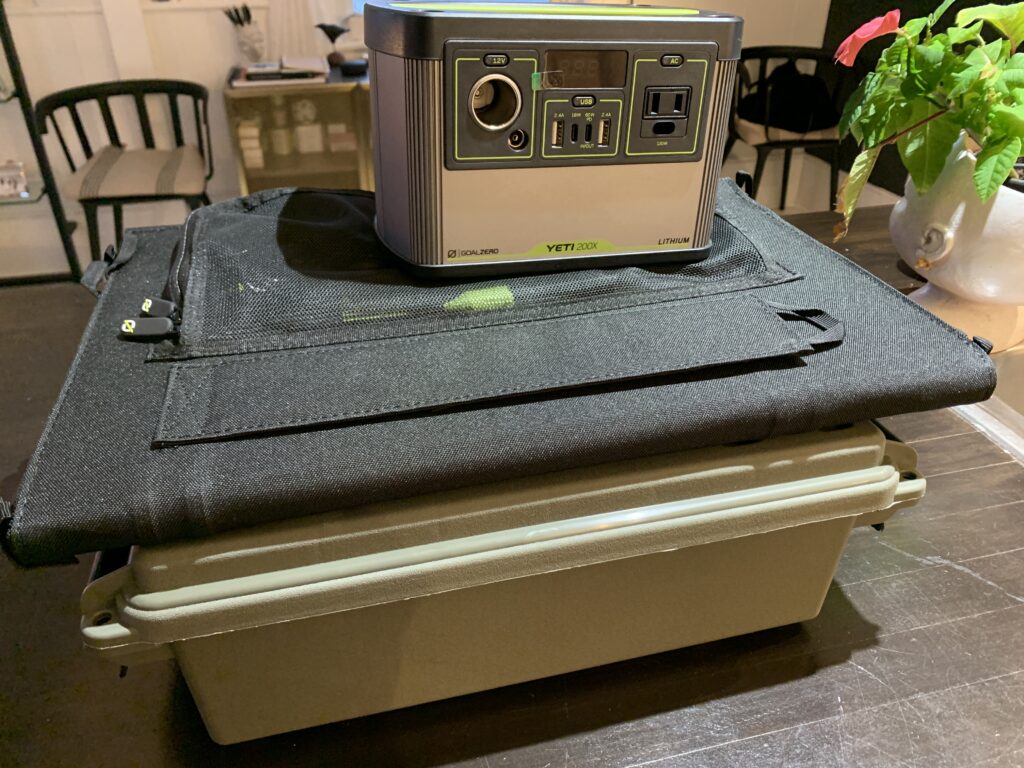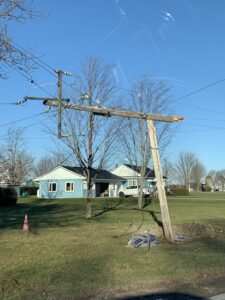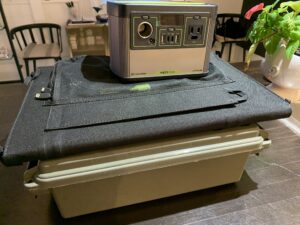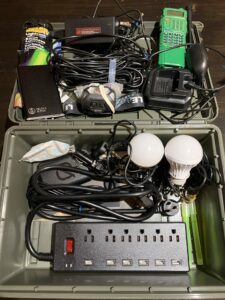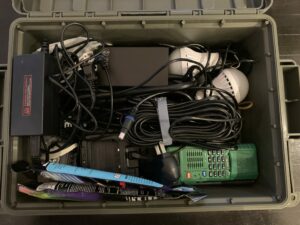Simple Preparedness set-up for small spaces or mobile applications.
A few weeks ago my local area experienced some uncharacteristically high winds and storms. This storm system knocked over trees and hydro poles, causing blackouts for tens of thousands of people across Southern Ontario and beyond. For me, the power outage lasted about 36hrs or so. It was chilly outside but thankfully I have a wood stove, plenty of firewood and enough stored water to get through it all.
You can read my write-up about that incident and some lessons learned HERE. This post is a follow-up insofar as the requirement for a power backup for such an eventuality.
Through a combination of Black Friday/Cyber Monday/Christmas/Boxing-day/New Years sales Was able to cobble together a bunch of pieces to address short-term/light duty power outages that was both capable, cost-effective and also small enough to be portable (if needed). This set-up would allow for daytime power to a small domestic-size water pump (for drinking water and cooking, toilets, and even shower if needed, based on frugal use), A fridge for a few hours per day to keep foods cold/frozen. For the evenings, basic water pumping and LED lights. This takes into account that a day-long charge via solar panel would recharge the power bank to about 80% to allow for overnight rationed use. During the day one could also charge one’s cell phone to maintain communications and updates.
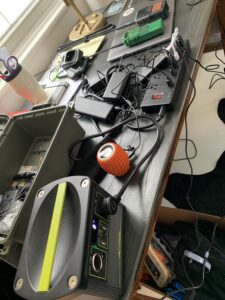
I spent a day fiddling with the various components, attachments and pieces to ensure that I was able to accomplish what I wanted and that everything worked. This way I knew that everything I would pack away was in working order and I knew how to use it and assemble it – especially considering I would be doing it in the dark (or at least reduced visibility).
Part of my set-up also included several pre-charged battery packs for power resumption for cell phones, laptops and even lights.
All of the various components fit within a plastic “ammo crate” and easily slide away when not needed.
The entire package slips easily in a closet or under a bed, so those folks who have a premium on space (such as condo dwellers) can make this work quite easily for them.
The Power Bank is the Goal Zero Yeti 200x.
The Solar Panel array is the Goal Zero Nomad 50.
The ammo crate is daily low profile and is air-tight, so any accessories are safe inside, easily contained and handy to carry with the ergonomic handles.
Inside, I have the following:
- Glow sticks x 4
- Battery pack for cell phone ( from @delta2alphadesign )
- LED headlamp with fresh batteries (removed to prevent discharge or damage)
- BaoFeng VHF/UHF handheld radio w/charger (battery removed)
- Goal Zero cables (x3) for DC power, AC power bank charging, solar panel extension cord)
- 2 x LED bulbs for light (with USB plugs, switch activated)
- Silica pack for any extra moisture
- Surge-protected 6 x USB/6x AC-plug power bar.
Once everything is folded up and packed away, there is still about 20%% room to spare in the crate (as I will likely update and modify the kit).
I put a hefty screw above the window with the most Southern exposure to allow for solar panel effectiveness.It worked well, taking about 5hrs to bring the power bank to 90% charge. The day was partially cloudy, so I have not yet been able to run it through enough use/fill cycles to get a solid feel of its power parameters.
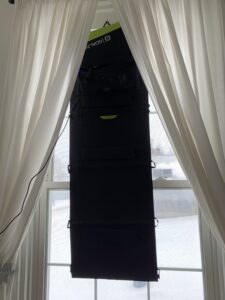
Through this process of identifying a problem, formulating a solution and taking action to resolve it, I have further identified other issues that I could address as time goes on. The reality is that several solutions require either time, money or both. During the wind storm blackout, we didn’t have internet at the house, simply because the power was out. My cell phone, however, was still able to make calls, send texts and access the internet via cellular network. One thing that I would add to my preps (on the horizon) would be one of those APU units for computers so that I would still have internet service and connectivity should I be without grid power but the cellular tower is still operating. A next-level upgrade would be to install an in-line propane-powered generator.
For the most part, I am very happy with this setup. The idea that it is small, powerful, meets the desired goals and objectives while keeping costs relatively low and is adaptable to changing situations makes me happy. I am also fond that the entire kit is small enough to be stored away in even the smallest living space without much fuss. This makes it perfect for urbanites looking for some back-up power solutions (especially in a condo or loft where one is not in control of one’s own utilities).
Till next time, stay safe and #staycrafty.

